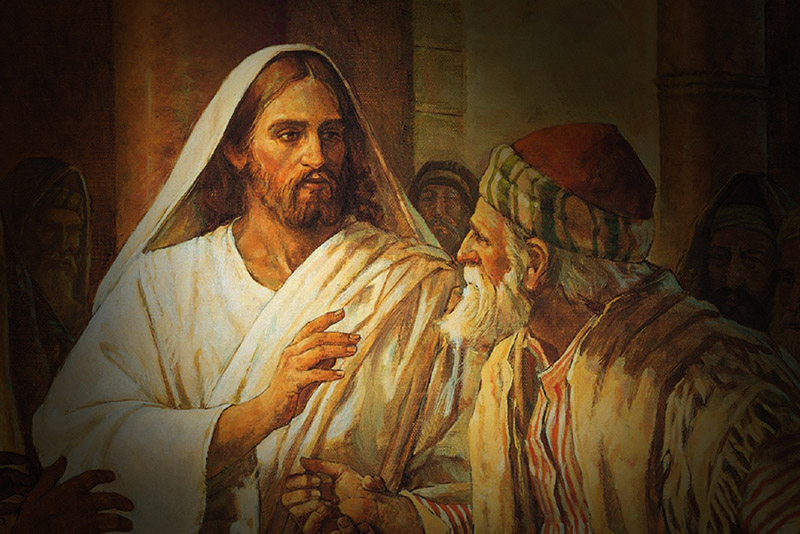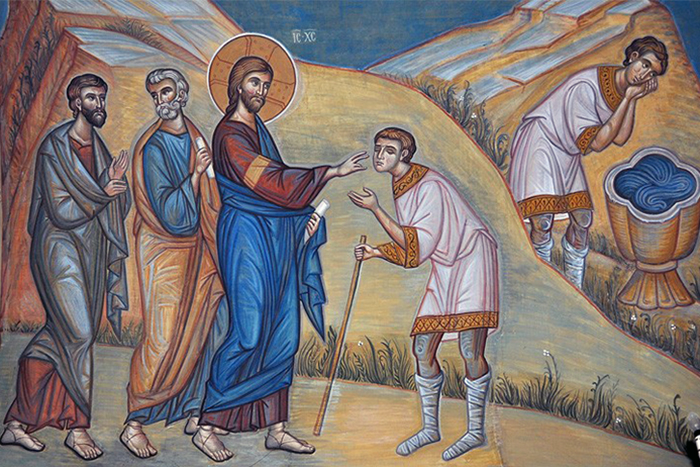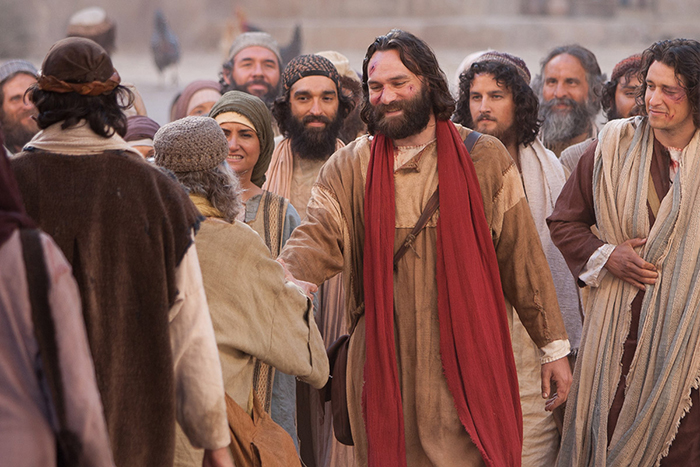
Jesus is sometimes said to have claimed that the world was coming to an end during the lifetime of His generation and therefore He was clearly mistaken. Is that true?
The Gospel of Matthew says, For the Son of man shall come in the glory of his Father with his angels; and then he shall reward every man according to his works. Verily I say unto you, There be some standing here, which shall not taste of death, till they see the Son of man coming in his kingdom (Matthew 16:27,28).
It turns out that His prophecies did not come true as all these people died and 2000 years later, the second coming never took place. Right?
We may feel that our faith is justified, but we cannot always explain it or prove it to an unbeliever, especially to someone who for some reason finds our worldview difficult to accept. The rational questions of an atheist can baffle even the most sincere Christian. Sergei Khudiev, our regular author, tells how to respond to common atheists’ arguments in the project Dialogue with Atheists: Orthodox Arguments.
First, we will have to clarify the meaning of the expressions “Son of Man” and “Kingdom”.
We are used to the fact that the “Son of Man” is just another name of Jesus. However, for His contemporaries, it was not. The “Son of Man” was a mysterious royal figure, about whom Daniel prophesied, And there was given him dominion, and glory, and a kingdom, that all people, nations, and languages, should serve him: his dominion is an everlasting dominion, which shall not pass away, and his kingdom that which shall not be destroyed (Dan. 7:14). Yes, people expected Him to come, but it was not obvious to the contemporaries that it was Jesus who was that Son of Man. He gradually revealed this truth to them. Even the apostles needed someone to verify this. Therefore, the promise that some of his contemporaries will “see the Son of Man” does not refer to the end of the world and the Final Judgment, but to the moment when some of the apostles will see and make sure that Jesus is the royal Son of Man.
The way this happened is described literally in the following verses, at the beginning of Matthew 17: And after six days Jesus taketh Peter, James, and John his brother, and bringeth them up into an high mountain apart, And was transfigured before them: and his face did shine as the sun, and his raiment was white as the light. And, behold, there appeared unto them Moses and Elias talking with him. Then answered Peter, and said unto Jesus, Lord, it is good for us to be here: if thou wilt, let us make here three tabernacles; one for thee, and one for Moses, and one for Elias. While he yet spake, behold, a bright cloud overshadowed them: and behold a voice out of the cloud, which said, This is my beloved Son, in whom I am well pleased; hear ye him (Matthew 17:1-5).
The “Kingdom of God” in the Bible means “God’s Dominion” and is a reality with several dimensions. First, the Kingdom is an already present reality of God’s dominion for those who believe in Him. For example, the Lord speaks of the Kingdom which was already present in the life of the Old Testament Israel: Therefore say I unto you, The kingdom of God shall be taken from you, and given to a nation bringing forth the fruits thereof (Matthew 21:43).
This Kingdom is invisible to outsiders, but it is already genuinely present in the world among those who believe in Jesus: And when he was demanded of the Pharisees, when the kingdom of God should come, he answered them and said, The kingdom of God cometh not with observation: Neither shall they say, Lo here! or, lo there! for, behold, the kingdom of God is within you (Luke 17:20,21).
The Kingdom is gradually ripening in the world, like leaven (Matthew 13:33), the harvest in a field (Matthew 13:24), a tree that will inconspicuously grow out of grains (Matthew 13:31). The unfolding of the Kingdom is a long-term process, during which everyone has time to slumber and sleep, cf. the parable of the Maidens (Matthew 25:5).
Thus, the Kingdom of God, already established by Jesus, is present in the world as the Church.
The final gathering of this Kingdom ends at the end of history with its evident triumph, which is often described in the Gospel as a wedding feast (e.g., Matthew 22:2).
The Last Judgment takes place. Those who chose to enter the Kingdom during their earthly lives stay in it forever, while those who refused remain outside for eternity.
Thus, the generation of apostles had already met the Son of Man – that is, Jesus – and joined His Kingdom – that is, the Church.
However, in Chapter 13 of the Gospel of Mark and parallel passages Jesus predicts the end of the world in the lifetime of the generation of his listeners: Verily I say unto you, that this generation shall not pass, till all these things be done (Mark 13:30). What is the meaning of these words?
These words do not refer to the end of the world, but to another event that already happened, and it was during the life of the generation of Jesus. Let us return to the context of the Gospel story: And as he went out of the temple, one of his disciples saith unto him, Master, see what manner of stones and what buildings are here! And Jesus answering said unto him, Seest thou these great buildings? there shall not be left one stone upon another, that shall not be thrown down. And as he sat upon the mount of Olives over against the temple, Peter and James and John and Andrew asked him privately, Tell us, when shall these things be? and what shall be the sign when all these things shall be fulfilled? (Mark 13:1-4).
In other words, Jesus answers the specific question of when the “great buildings” of Jerusalem will be destroyed. This destruction happened in 70 AD, when after the failed Jewish revolt against Rome, Jerusalem was besieged and destroyed. The magnificent temple, where sacrifices had been made until the last moment, was destroyed in a fire, and all that remained of it was the famous Wailing Wall in Jerusalem. The Lord uses the bright, imaginative language of the Old Testament prophets to describe the coming destruction of the city.
For example, the Prophet Isaiah, speaking about the destruction of Babylon, uses similar images: Behold, the day of the LORD cometh, cruel both with wrath and fierce anger, to lay the land desolate: and he shall destroy the sinners thereof out of it. For the stars of heaven and the constellations thereof shall not give their light: the sun shall be darkened in his going forth, and the moon shall not cause her light to shine (Isaiah 13:9,10).
So is this not about the end of the world, but only about the destruction of Jerusalem?
In fact, the language of the Bible is characterized by ample use of prototypes. A certain image in the Scripture may have more than one meaning. For example, “Lucifer, son of the morning” mentioned in Isaiah 14:12 is literally the king of Babylon. However, the image of the arrogant pagan tyrant, who rebelled against God and is doomed to die, also denotes the father of pride, the devil. The destruction of Jerusalem – a catastrophe, the horror of which we cannot now imagine – meant the end of the Old Testament world, and thus a prototype of the end of the world as a whole.
What do we know about the time of the end of the world? Let us read the following words that Jesus said in response to this question in the Gospel of Matthew:
But of that day and hour knoweth no man, no, not the angels of heaven, but my Father only (Matthew 24:36).
Translated by The Catalogue of Good Deeds
Source: https://foma.ru/predskazyival-li-iisus-skoryiy-konets-sveta.html



